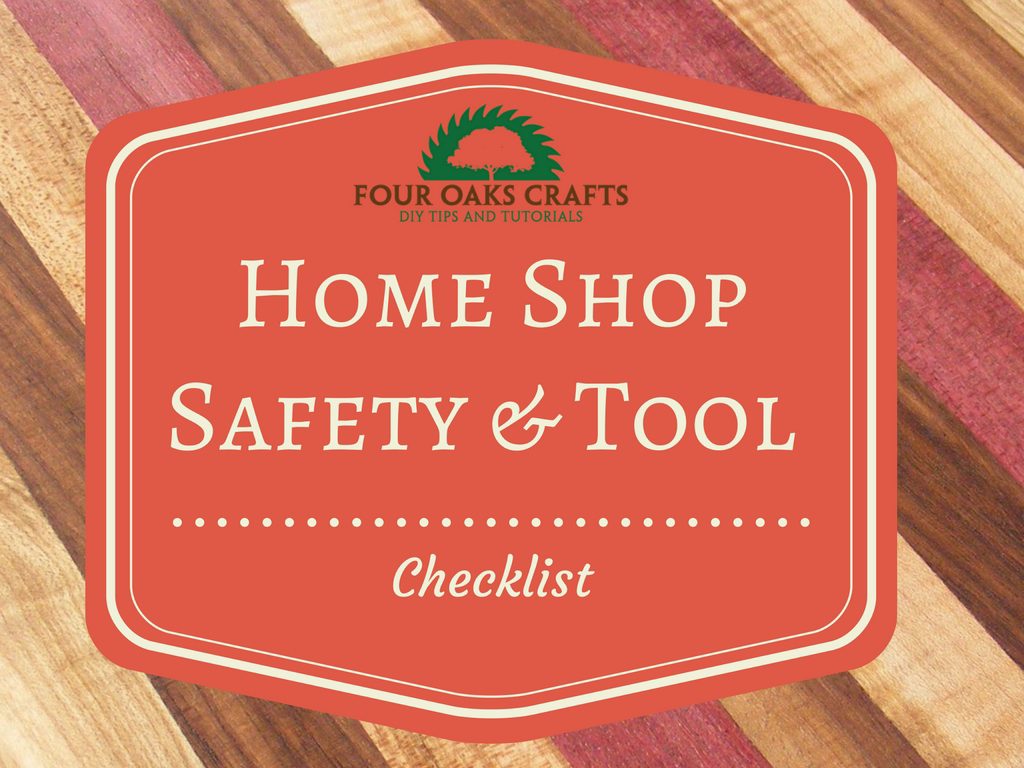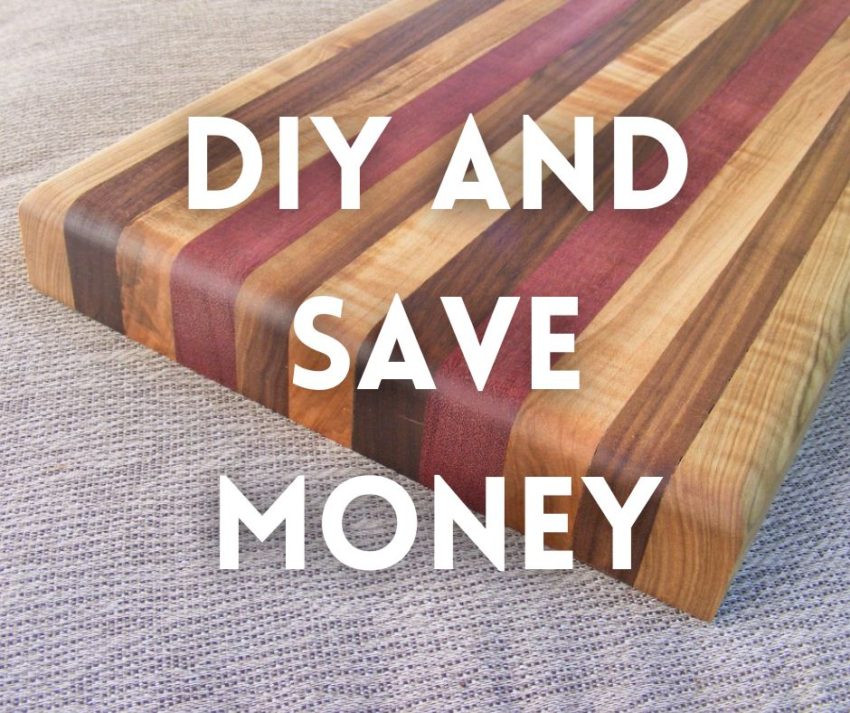DIY and Save Money | 45+ Tips and Ideas
With inflation climbing and the stock market swinging through the jungle like Tarzan, I thought I would put together some tips and ideas for do-it-yourselfers to save and maybe even make additional money. You DIYers are superstars, and I know that if anyone can make it through difficult times you can. God bless you and wishing you all the best in the coming years.
By the way, I have the “+” sign in the title for a reason. First, I’d like to add ideas that you have. So, please share in the comments your DIY tips and ideas for getting through these tough times. And second, I may add some new ones that come to mind in the future.
Making Things for the Home and Yard
Just by educating yourself and having a few basic tools, you can make a lot of things more cheaply than if you buy them from a store. Some projects might take longer to master than others, but with YouTube and other resources out there, you can learn to do just about anything. Except maybe for brain surgery. Can you imagine what Jethro Bodine could have done if he had had access to YouTube?
- Make your own kitchen utensils from wood. Things like spoons, butter knifes, spatulas, cutting boards, bowls, salt & pepper shakers all can be made from wood. With proper care, they will last a long time.
- Make your own furniture – e.g., farmhouse tables, Adirondack chairs, picnic tables, benches, etc.
- Make yard games for the family – cornhole boards are very popular and easy to make. Other ideas: playscapes, swing sets, giant Jenga, yard dice, tree houses, etc.
- Attach rain barrels to your gutters to store water for the garden or lawn.
- How about a DIY fire pit? I made one several years ago and the family enjoys time around the fire talking and making s’mores.
- Other DIY projects for the yard: bird houses, bat houses, beehives, planter boxes, raised garden beds, storage sheds, decks, patios, porch décor, etc.
- Other DIY projects for the home: home décor, picture frames, bookshelves, wall art, tables, desks, cabinets, etc.
- Make your own gifts. What a great way to save money and show someone you care. I do this often myself. But I still haven’t figured out how to make a diamond ring out of wood – LOL.
Save Money on Tools, Wood, & Supplies
Tools and supplies can get expensive and as you know can range greatly in price. I try to keep a happy medium – not buying the cheapest tools and not buying the most expensive. It takes patience finding the right tool sometimes for the job at hand.
- Understand the versatility of your tools. Then only buy tools that match your projects. For example, the table saw will make all the cuts – and more – that a miter saw will do. So, you may not need the miter saw. That also means less space taken in your shop, garage, etc.
- Borrow tools for one-off, specialized jobs. I do all my own pressure washing around the house in a couple of days, so I borrow a pressure washer from my dad.
- Consider used tools. This is especially true for hand tools that you can find in yard sales or flea markets. For hand tools you can usually get by with a visual inspection. For used power tools, you may want to ask if you can try the tool to check for things like vibration, alignment, power output, belt condition, etc.
- Save up your money for better tools. If you can afford to, save your money, and buy safe, quality tools. Try to set aside a few dollars each week or month and then you’ll have enough by the end of the year. I’m not suggesting that you need to buy tools at the highest end.
- Don’t buy a tool just because it’s on sale. Yes, this one has gotten me a few times.
- Take advantage of discount tool stores. These stores often get a bad rap, but if you’re a weekend DIYer, many of the tools are good enough. I’ve shopped at Harbor Freight for many years and still have working tools that haven’t given me any problems.
- Use available coupons or ask about promo codes. Black Friday is usually a good time to buy a bigger ticket item. Or no-sales-tax holidays. Watch fliers and catalogs for seasonal sells.
- Have a goal in mind before you enter the woodworking or craft supply store. It’s easy to get into an impulse-buy mode when visiting these type stores. Let’s face it – we don’t visit these stores too often now (in the age of Amazon), so there’s a temptation to buy more.
- Look for free wood or reclaimed wood to lower your costs. Pallet wood is a good source of free wood, although it might be a little challenging to take apart. I love the rustic look you can get with pallet wood, barn wood or other reclaimed wood.
- Check with lumber yards or cabinet shops to see what kinds of deals you might get. If your projects are relatively small you might pick up some nice waste pieces.
- Consider working with green wood. Sources might be tree trimmings or logs from trees taken down in a storm. You’ll need to understand how to work with green wood (which is generally easier) and season it, so it doesn’t crack.
Work on Your Own Vehicles
I know, I know. Cars are getting more and more complicated. But there are still a few things you can learn how to do to save you money. Just be sure to use a good shop manual as your guide for safety and proper repairs
- Spend a few extra dollars and invest in a good shop manual. This is different from the owner’s manual that comes with the car. The shop manual goes into more details on repairs. These are often available through the dealership and should be your bible for the vehicle you own. Then you can cross check with YouTube videos, but just make sure the YouTube video is covering your specific model.
- Change your own oil. You can save a lot of money changing your own oil, but the downside is it can get messy, and you must properly dispose of the oil. Check owner’s manual for the correct type of oil.
- Ignore the oil change sticker. If you take the car in for oil changes, understand that they almost always give you a new oil-change sticker set for 3000 miles. Many cars can go farther than that depending on the model and type of oil you use. Check your owner’s manual to see what’s required. Also, the oil-change place will usually try to sell more stuff to you like air filters, wiper blades, tire rotation, so beware.
- Check all your fluid levels periodically. This is probably one of the biggest factors that has enabled me to drive vehicles for 10+ years. My 2009 truck currently has over 300,000 miles and still going. Also, try to follow the maintenance schedule provided in your owner’s manual.
- Shop around for deals on tires. Take a look at membership clubs like Sam’s who might offer good discounts on tires. And don’t let someone talk you in to changing them before it’s time.
- Consider doing your own brake job. I’ve saved thousands of dollars over the years changing my brakes. Normally this requires changing out the pads with a few basic tools you probably already have. Get some training by reading your shop manual or learning from a friend. YouTube is also a great learning source.
- A few other things that are relatively easy to change yourself: spark plugs, batteries, lamps, air filters.
- Consider having one electric vehicle in your fleet. I’ve had an electric car now for over two years and love it. I didn’t choose it for any political reasons, but for practical reasons. It currently saves me tons of money on gas bills and the maintenance costs are much lower. My driving range may be a little more limited, but I use the car for work commutes and around town.
Do your own home Improvements and Maintenance.
- Do your own plumbing. Learn how to run pipe and fix those leaky toilets. Have you seen how much plumbers charge lately? Check your water usage each month on the water bill. You never know when you might have a slow leak somewhere and your hard-earned cash is going down the drain too.
- Change out your thermostats. Thermostat technology has really changed over the years. You can now get programable thermostats that work with apps on your phone. Your heating and cooling system is one of your biggest energy expenses. You can change thermostats out yourself.
- Get an energy audit and make your own fixes. Check with your power company first because they often offer free energy audits. They’ll tell you if your insulation is adequate and recommend other changes. Changes which you can do yourself. Most of the recommendations will probably involve adding insulation, weatherstripping, updating thermostats or changing out light bulbs to LEDs. You can save a lot on your monthly electric bill by making just a few tweaks to your home.
- Improve your heating/cooling system by periodically changing out filters, vacuuming intake vents, and cleaning the outside units.
- Learn to do basic electrical wiring. I have done most of my own wiring over the years, and it’s not difficult to do. Just make sure you get some training and you’re confident with electrical projects. Follow all the safety procedures and follow the National Electrical Code requirements. For some jobs, you may have to hire a licensed electrician.
- Do your own painting. I admit it’s not my favorite thing to do, but you could save hundreds, if not thousands of dollars. Make sure you get the right amount of paint. It’s so easy to buy too much and before you know if half your garage is filled with unused paint cans.
- Try repairing instead of replacing. It’s so easy to throw up the hands and say it’s time to buy a new appliance, but often times all you need to do is a repair. I’m talking about repairs you can do. I’ve done this with washing machines, lawnmowers, dishwashers, etc. The only time I would replace something is if it would require a specialized tool or skill I don’t have.
- Learn how to cut down a tree. I’m mainly talking here about dead trees and trees that could potentially damage your home or a structure. Although I have experience cutting down trees, I recently hired a tree service because I had a few dead trees within 10 to 20 feet of my house. I didn’t want to take any chances. They charged me $650 per tree. But if you learn how to work a chainsaw safely, you’ll never lack free firewood.
- Maintain your own yard. Not everyone has time for this, but you can save a lot by doing yourself. I’ll freely admit that I don’t shoot for a pristine lawn, but I respect that many do.
Create your own food
I don’t have to tell you how much our grocery bills have skyrocket lately. Here is an area to make a dent in spending, if you have the time and acreage.
- Plant a garden. Save money off fruits and vegetables and get some exercise in the process. For years my family kept a ½ acre garden and my dad planted things like, tomatoes, green beans, cucumbers, corn, squash, peas, butter beans, watermelon, grapes, blueberries. If you don’t have the acreage, you could build a few raised beds to place in your back yard.
- Raise honeybees. If you have the time and interest, you can start a couple hives in your yard to help pollinate your garden. And you reap the sweet reward of honey. My dad has been raising bees for over 40 years now. As a DIYer, my dad would build his own beehives and process the honey himself. He also built a solar wax melter to melt the wax down into small blocks.
- Consider other homesteading options. If you have significant acreage, then you can consider things like raising livestock, chickens, bigger gardens, etc. And when you have excess (e.g. vegetables, honey or eggs) then you might consider selling stuff at your local farmer’s market. Some people make a nice side income generated from their homestead.
- Hunt and fish for wild game. I know this isn’t for everyone, but it can sometimes help cut down on the grocery bill especially if you learn how to process game yourself. Generally, wild game is very lean and nutritional. And there’s some exercise involved obtaining it. Again, we have hunted and fished for years and benefited from eating more nutritious meals. Do you know where your meals come from?
Make money off your DIY projects or Skills
This may not be for everyone, and I would not recommend you quitting your secure day job. But if you have solid making skills, you could create a potential side hustle that could generate a nice side income. Of course, you may want to consult with your tax advisor or financial consultant to make sure it’s worth the effort.
- Sell your crafts. There are many avenues to sell your crafts. Anyone can set up an Etsy shop and sell their goods through that site. Etsy helps with the transaction, and you handle the fulfillment and shipping. Crafts fairs are another way to sell and then there are consignment shops.
- Sell excess items from the homestead. If you do homestead activities, chances are you may have excess you can’t use. For years, my beekeeper dad has sold excess honey and then plowed that back into his hobby. He also was able to make a little money off the wax.
- Sell woodworking plans online. If you’re good with drawing software, you may want to consider creating plans and selling them. You can sell these easily on a site like Gumroad.
- Use your skills to freelance. Perhaps you have some unique skills outside of your regular job. You can freelance through online sites like Fiverr.
- Teach something. Perhaps you can teach your own classes face-to-face at a craft store, an event or maybe in your own home. For example, it could be as simple as offering a few 1-hour guitar lessons during the evening hours.
- Create an online course. Think of something you’re good at, passionate about or know a lot about. You could create an online course using a site like Udemy
- Checkout my more comprehensive post here where I offer about 42 tips on making money off your creations.
Thanks for checking out my post: DIY and Save Money | 45+ Tips and Ideas. I knows it’s not practical to implement all of these ideas, but hopefully you can do some of them. Please share your ideas, tips or questions in the comments field.
Please note – this article is meant to be for inspiration only. Some of these ideas could mean you need to consult your physician, get some additional training, or check with your professional advisors.
God bless!

Are you starting up a new shop? Want to work safer in your shop? To help you answer these questions I've put together a 2-part checklist -- Home Shop Safety & Tool Checklist.
I will also send you updates of my latest woodworking and DIY projects. You can get all this by subscribing to my free email newsletter.







Very nice article you put to gather. And I like alot of you woodturning projects you post
Thanks for checking out the article! I’m glad you like the woodturning projects.